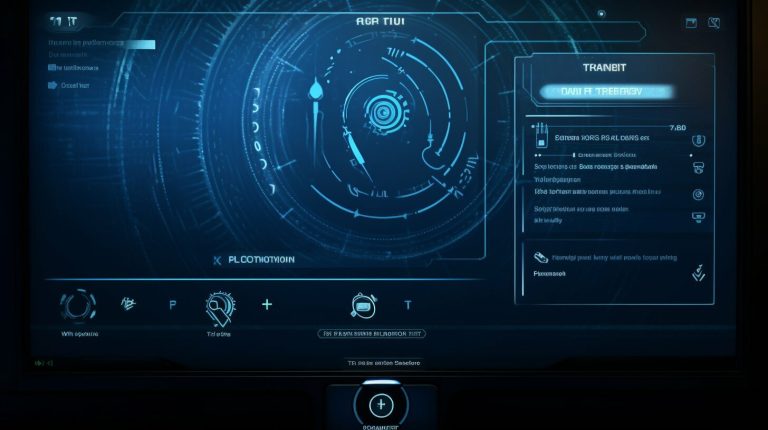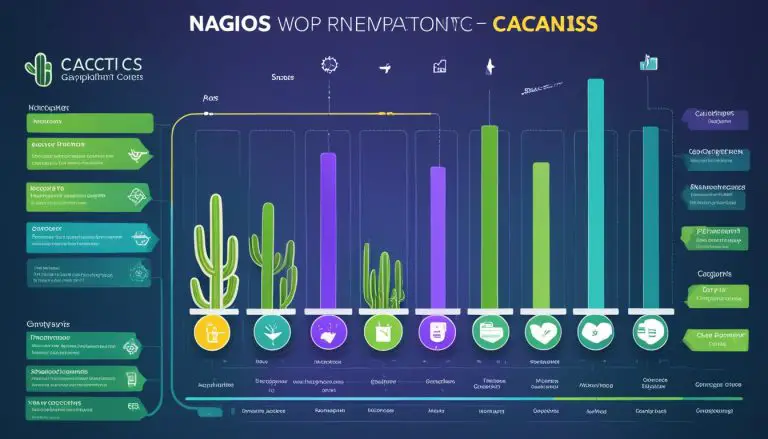What is ATM (Asynchronous Transfer Mode) Explained
Asynchronous Transfer Mode (ATM) is a telecommunications standard designed to transmit multiple types of traffic, including traditional high-throughput data, voice, and video. It was developed in the late 1980s as part of the Broadband Integrated Services Digital Network. ATM uses a combination of circuit switching and packet switching by employing asynchronous time-division multiplexing. It operates at the data link layer and uses fixed-length cells for data transmission. ATM provides a connection-oriented model, where a virtual circuit must be established before data exchange can occur. It is commonly used in the backbone of telecommunications networks.
Key Takeaways:
- ATM is a telecommunications standard for transmitting data, voice, and video.
- It combines circuit switching and packet switching.
- ATM operates at the data link layer and uses fixed-length cells for data transmission.
- A virtual circuit must be established before data exchange can occur in ATM.
- ATM is commonly used in the backbone of telecommunications networks.
The OSI Reference Model and ATM
When it comes to understanding the connection between ATM (Asynchronous Transfer Mode) and the OSI reference model, it’s essential to dive into the intricate details. ATM is a telecommunications standard that operates at the physical layer, data link layer, and network layer, mapping to the three lowest layers of the OSI model. Unlike protocols like Ethernet or IP that use variable-sized packets, ATM uses fixed-length cells for data transmission.
ATM combines both circuit switching and packet switching techniques, making it suitable for various types of traffic. It follows a connection-oriented model, where a virtual circuit needs to be established before data exchange can occur. These virtual circuits can either be permanent connections or switched connections set up on a per-call basis. This model allows for efficient and reliable data transmission.
The utilization of fixed-length cells in ATM provides several advantages, including low queuing delay and efficient handling of voice and real-time traffic. With the ability to support different types of traffic, ATM plays a crucial role in the backbone of telecommunications networks, ensuring reliable and high-performance communication.
The OSI Reference Model and ATM
To better understand how ATM fits into the OSI reference model, it’s important to recognize its connection-oriented nature and its utilization of fixed-length cells for data transmission. By mapping to the physical, data link, and network layers of the OSI model, ATM provides a comprehensive solution for transmitting various types of traffic across telecommunications networks.
ATM Cell Structure and Design
ATM, or Asynchronous Transfer Mode, is a telecommunications standard that transmits data using fixed-length cells. Understanding the structure and design of ATM cells is essential to grasp the inner workings of this technology. Each ATM cell consists of a 5-byte header and a 48-byte payload. The header contains vital information such as the virtual path identifier (VPI), virtual channel identifier (VCI), payload type (PT), cell loss priority (CLP), and header error control (HEC).
By utilizing fixed-length cells, ATM minimizes queuing delay and ensures efficient transmission of various types of traffic, including voice and real-time data. The fixed structure of ATM cells allows for easy switching and processing, enhancing the overall performance of the network. Let’s take a closer look at the specific components of an ATM cell:
ATM Cell Components
- Header: The 5-byte header of an ATM cell contains crucial information for routing and processing. It includes the VPI and VCI, which are used to identify the virtual path and virtual channel, respectively. The payload type indicates the type of data carried by the cell. The cell loss priority determines the priority for discarding cells during congestion. Lastly, the header error control ensures the integrity of the header information.
- Payload: The 48-byte payload of an ATM cell carries the actual user data. It can include various types of traffic, such as voice, video, or traditional data. The payload is segmented into fixed-sized cells to ensure efficient transmission.
ATM defines two cell formats – the user-network interface (UNI) cell format used within private networks and the network-network interface (NNI) cell format used for communication between ATM switches. These formats specify the arrangement and interpretation of the header and payload fields, allowing for seamless interoperability within the ATM network.
| Component | Size (Bytes) | Description |
|---|---|---|
| Header | 5 | Contains VPI, VCI, PT, CLP, and HEC |
| Payload | 48 | Carries user data |
The design of ATM cells, with their fixed-length structure and well-defined components, allows for efficient and reliable transmission of data in telecommunications networks. The use of ATM technology enables the seamless integration of various traffic types, ensuring optimal performance and quality of service.
ATM Protocol Architecture
The ATM protocol architecture is designed to minimize queuing delay and packet delay variation, ensuring efficient and reliable data transmission. With its fixed-size cell structure, ATM breaks up packets and data streams into 48-byte chunks, adding a 5-byte routing header to each cell. The use of fixed-length cells allows for low queuing delay, reducing the contention jitter and the need for echo cancellers. This is especially important for maintaining the real-time nature of voice traffic.
ATM operates on a connection-oriented model, where a virtual circuit is established before data exchange can occur. This ensures predictable quality of service and optimized utilization of high-speed networks. The protocol architecture of ATM supports speeds ranging from 155 Mbps to 10 Gbps, making it suitable for high-performance networking environments.
ATM Protocol Architecture
One of the key advantages of ATM protocol architecture is its ability to handle diverse types of traffic, including voice, video, and data, with end-to-end quality of service. This makes ATM a versatile solution for various applications, such as multimedia networks, frame relay backbones, and residential broadband networks. Its efficient design and high-speed capabilities make it a crucial technology for carrier infrastructure in telephone and private line networks.
In summary, ATM protocol architecture combines fixed-size cells, connection-oriented model, and high-speed capabilities to deliver efficient and reliable data transmission. Its ability to handle different types of traffic and provide predictable quality of service makes it a valuable technology in various networking environments.
| Advantages | Disadvantages |
|---|---|
| Optimized queuing delay | Higher cost compared to newer technologies |
| Low packet delay variation | Complex protocol stack |
| Efficient transmission of voice and real-time traffic | Limited scalability for high-speed data networks |
ATM Service Types
ATM supports various types of services through ATM Adaptation Layers (AALs), which are responsible for mapping user data into ATM cells. These services cater to different application requirements and enable efficient transmission of data, voice, and video.
One of the service types supported by ATM is Constant Bit Rate (CBR), which is designated as AAL1. CBR services have a fixed data rate and a constant transmission delay, making them ideal for real-time applications such as voice and video conferencing.
Another service type is Variable Bit Rate (VBR), which includes AAL2 and AAL3/4. VBR services are suitable for applications with varying data rates, such as multimedia streaming. AAL2 is optimized for small, time-sensitive packets, while AAL3/4 is designed for larger packets with less stringent timing requirements.
ATM also provides a service type called Unspecified Bit Rate (UBR), which is suitable for best-effort data transmission. UBR services do not guarantee a specific data rate or transmission delay and are commonly used for non-time-sensitive applications such as file transfer and email.
ATM Service Types Summary:
- ATM supports various service types through ATM Adaptation Layers (AALs).
- Constant Bit Rate (CBR) services have a fixed data rate and constant transmission delay.
- Variable Bit Rate (VBR) services cater to applications with varying data rates.
- Unspecified Bit Rate (UBR) services provide best-effort data transmission.
| Service Type | ATM Adaptation Layer (AAL) | Application |
|---|---|---|
| Constant Bit Rate (CBR) | AAL1 | Voice, video conferencing |
| Variable Bit Rate (VBR) | AAL2, AAL3/4 | Multimedia streaming |
| Unspecified Bit Rate (UBR) | AAL5 | Best-effort data transmission |
ATM Applications and Integration
Asynchronous Transfer Mode (ATM) has found its application in various domains, serving as a backbone for different types of networks. One of its key applications is in ATM WANs (Wide Area Networks), where it facilitates long-distance communication. By providing reliable and efficient transmission of voice, video, and data, ATM enables seamless connectivity and end-to-end quality of service in multimedia networks.
ATM is also widely used in frame relay backbones, offering a robust networking infrastructure for diverse data services. Its ability to handle high-speed transmission and provide low queuing delay makes it a preferred choice for frame relay implementations. Moreover, in residential broadband networks, ATM serves as a crucial backbone, delivering high-speed internet services to homes and offices.
Overall, ATM plays a significant role in the integration and optimization of telecommunications networks. Its application spans across various domains, including multimedia networks, frame relay, and residential broadband networks, making it a vital technology in the modern era of communication.
ATM Applications and Integration
Asynchronous Transfer Mode (ATM) has been successfully integrated into a range of network applications, serving as a backbone for communication in different domains. Its versatile nature allows for the efficient transmission of voice, video, and data, making it an essential component of ATM WANs (Wide Area Networks).
ATM is particularly valuable in multimedia networks, where it enables end-to-end quality of service and seamless connectivity. Its low queuing delay ensures the real-time transmission of voice and video, enhancing the overall user experience. Additionally, ATM plays a crucial role in frame relay backbones, providing a reliable networking infrastructure for various data services.
In the realm of residential broadband networks, ATM serves as a backbone that delivers high-speed internet services to homes and offices. With its ability to handle large amounts of data and provide low latency, ATM ensures smooth and efficient connectivity for residential users. Overall, ATM’s integration into different applications showcases its versatility and importance in the telecommunications industry.
| ATM Applications | Key Features |
|---|---|
| ATM WANs | Enables long-distance communication |
| Multimedia Networks | Facilitates seamless transmission of voice, video, and data |
| Frame Relay | Provides a reliable networking infrastructure for diverse data services |
| Residential Broadband Networks | Serves as a high-speed backbone for delivering internet services |
ATM vs. Data Networks
When comparing Asynchronous Transfer Mode (ATM) with data networks, such as Ethernet and IP, several key differences stand out. First and foremost, ATM operates on a virtual circuit-based model, where the path is reserved before transmission, ensuring a predictable quality of service. In contrast, data networks utilize a connectionless model, where packets are routed individually without the need for a pre-established path.
Another notable distinction is the way data is encoded and transmitted. ATM employs fixed-size cells, typically consisting of a 5-byte header and a 48-byte payload. This fixed structure allows for efficient transmission of time-sensitive traffic, such as voice and video, while minimizing queuing delays. In contrast, data networks like Ethernet and IP use variable-sized packets, which can lead to higher latency and less predictable performance.
Addressing is yet another area where ATM and data networks differ. In ATM, global NSAP addresses are used for signaling, providing a hierarchical addressing scheme. Additionally, 32-bit locally assigned labels are used within each cell to identify the specific destination. In contrast, IP uses 32-bit global addresses for routing packets across the network.
In summary, ATM’s virtual circuit-based model, fixed-size cells, and unique addressing scheme make it a preferred choice for high-performance and specialized networks. While data networks like Ethernet and IP have their own advantages, ATM’s design ensures a reliable and efficient transmission of various types of traffic.
ATM in Wireless Networks
Wireless ATM (WATM) is an extension of the Asynchronous Transfer Mode (ATM) technology that enables high-speed mobile communications. WATM combines the benefits of ATM, such as guaranteed quality of service and efficient data transmission, with the flexibility and mobility of wireless networks. It allows for seamless connectivity between base stations and mobile terminals, making it suitable for applications in mobile communications.
With WATM, cells are broadcasted from a base station and transmitted to mobile terminals, ensuring reliable and uninterrupted communication. This technology enables the transmission of voice, video, and data services over wireless networks with enhanced quality of service. The use of ATM in wireless networks brings the advantages of low queuing delay and efficient utilization of high-speed connections.
Benefits of WATM
- Guaranteed quality of service: WATM ensures that voice and real-time applications receive the necessary bandwidth and low latency for optimal performance.
- Seamless mobility: WATM allows mobile terminals to maintain connectivity while moving between base stations, ensuring uninterrupted communication.
- Efficient data transmission: By utilizing ATM’s fixed-length cells, WATM minimizes queuing delay and optimizes the utilization of wireless networks.
- Support for multiple services: WATM supports the transmission of voice, video, and data services, making it suitable for diverse applications in mobile communications.
“Wireless ATM (WATM) combines the benefits of ATM, such as guaranteed quality of service and efficient data transmission, with the flexibility and mobility of wireless networks.”
WATM has found applications in various sectors, including public safety, transportation, and enterprise networks. It offers a reliable and high-speed solution for mobile communications, enabling seamless connectivity and quality of service for voice and data transmission. As wireless technology continues to advance, WATM remains a valuable tool for delivering efficient and reliable wireless communication services.
| Benefits of WATM | Description |
|---|---|
| Guaranteed quality of service | WATM ensures that voice and real-time applications receive the necessary bandwidth and low latency for optimal performance. |
| Seamless mobility | WATM allows mobile terminals to maintain connectivity while moving between base stations, ensuring uninterrupted communication. |
| Efficient data transmission | By utilizing ATM’s fixed-length cells, WATM minimizes queuing delay and optimizes the utilization of wireless networks. |
| Support for multiple services | WATM supports the transmission of voice, video, and data services, making it suitable for diverse applications in mobile communications. |
Voice over Asynchronous Transfer Mode (VoATM)
Voice over Asynchronous Transfer Mode (VoATM) is a high-speed transport protocol that enables the transmission of voice packets over an ATM network. This technology allows companies with existing ATM infrastructure to leverage their network for voice communication, providing reliable and efficient voice transmission.
Unlike Voice over IP (VoIP), which uses the IP protocol, VoATM utilizes the strengths of ATM networks to deliver high-quality voice services. ATM’s connection-oriented model and fixed-length cell structure minimize queuing delay and packet delay variation, ensuring real-time voice traffic is transmitted seamlessly across the network.
“VoATM allows companies to take advantage of their existing ATM network infrastructure for voice communication, providing a high-speed transport solution with guaranteed quality of service.”
By utilizing VoATM, companies can benefit from the robustness and dedicated bandwidth of ATM networks, making it an ideal choice for applications that require high-quality voice communication, such as call centers, teleconferencing, and voice-enabled services.
Benefits of VoATM:
- Guaranteed quality of service for voice traffic
- High-speed transport over ATM network infrastructure
- Seamless integration with existing ATM networks
- Optimal utilization of dedicated bandwidth
Overall, VoATM offers a reliable and efficient solution for voice communication over ATM networks. Its high-speed transport capabilities and guaranteed quality of service make it a valuable technology for companies that rely on ATM infrastructure.
| Advantages of VoATM | Disadvantages of VoATM |
|---|---|
| High-speed transport for voice data | Costlier to implement compared to VoIP |
| Utilizes existing ATM network infrastructure | Requires specialized knowledge and equipment |
| Guaranteed quality of service | Limited scalability compared to IP-based solutions |
Conclusion
After exploring the intricacies of Asynchronous Transfer Mode (ATM) technology, it becomes evident that ATM has been a key player in the development of telecommunications networks. With its ability to transmit various types of traffic, including data, voice, and video, ATM has provided an efficient and versatile solution for telecommunications providers.
ATM’s unique design, utilizing fixed-length cells and a connection-oriented model, allows for low queuing delay and optimal utilization of high-speed networks. These features make ATM an ideal choice for telecommunications backbones and specialized networks where real-time transmission and quality of service are crucial.
While the adoption of newer technologies has surpassed ATM in certain areas, it continues to be utilized in telecommunications networks. The reliability and efficiency of ATM technology make it an enduring choice in the ever-evolving world of telecommunications.
FAQ
What is ATM (Asynchronous Transfer Mode)?
ATM is a telecommunications standard designed to transmit multiple types of traffic, including data, voice, and video. It uses a combination of circuit switching and packet switching to efficiently transmit data.
How does ATM differ from other network protocols like Ethernet and IP?
ATM operates on a virtual circuit-based model, where the path is reserved before transmission, providing predictable quality of service. Data in ATM is encoded in fixed-size cells, unlike variable-sized packets used in Ethernet and IP.
What are the advantages of using ATM in wireless networks?
In wireless networks, known as Wireless ATM (WATM), ATM allows for high-speed mobile communications and supports voice, video, and data services with guaranteed quality of service. WATM provides the advantages of ATM in wireless environments.
What is VoATM (Voice over Asynchronous Transfer Mode)?
VoATM is a protocol that enables voice packets to be transmitted over an ATM network. It provides high-speed transport for voice data and is beneficial for companies that already have an ATM infrastructure in place.
How is ATM used in telecommunications networks?
ATM is commonly used in the backbone of telecommunications networks, serving as a high-speed and efficient solution for transmitting data, voice, and video traffic with end-to-end quality of service.
What are the different ATM service types?
ATM supports various service types through ATM Adaptation Layers (AALs). These include constant bit rate (CBR) services, variable bit rate (VBR) services, and best-effort data transmission services, among others.
How does the ATM cell structure work?
ATM transmits data in fixed-length cells consisting of a header and a payload. The fixed-length cells allow for low queuing delay and efficient transmission of real-time traffic, such as voice and video.
What are the applications of ATM?
ATM has a wide range of applications and can be used as a WAN for long-distance communication, in multimedia networks for voice, video, and data transmission, in frame relay backbones for data services, and in residential broadband networks for high-speed internet delivery, among other uses.
How does ATM protocol architecture minimize delays?
ATM’s protocol architecture is designed to minimize queuing delay and packet delay variation, crucial for maintaining the real-time nature of voice traffic. It breaks up packets into fixed-size cells and adds a routing header to each cell, optimizing transmission efficiency.
Is ATM still widely used today?
While ATM’s adoption has been surpassed by newer technologies in certain areas, it continues to be utilized in telecommunications backbones and specialized networks due to its efficiency and versatility.
Source Links
- About the Author
- Latest Posts
Matthias Böhmichen is the founder of howto-do.it . He is using Linux since 1991 and fell in love with windows a few years later. He likes to discover new technologies, especially hard- and software.






